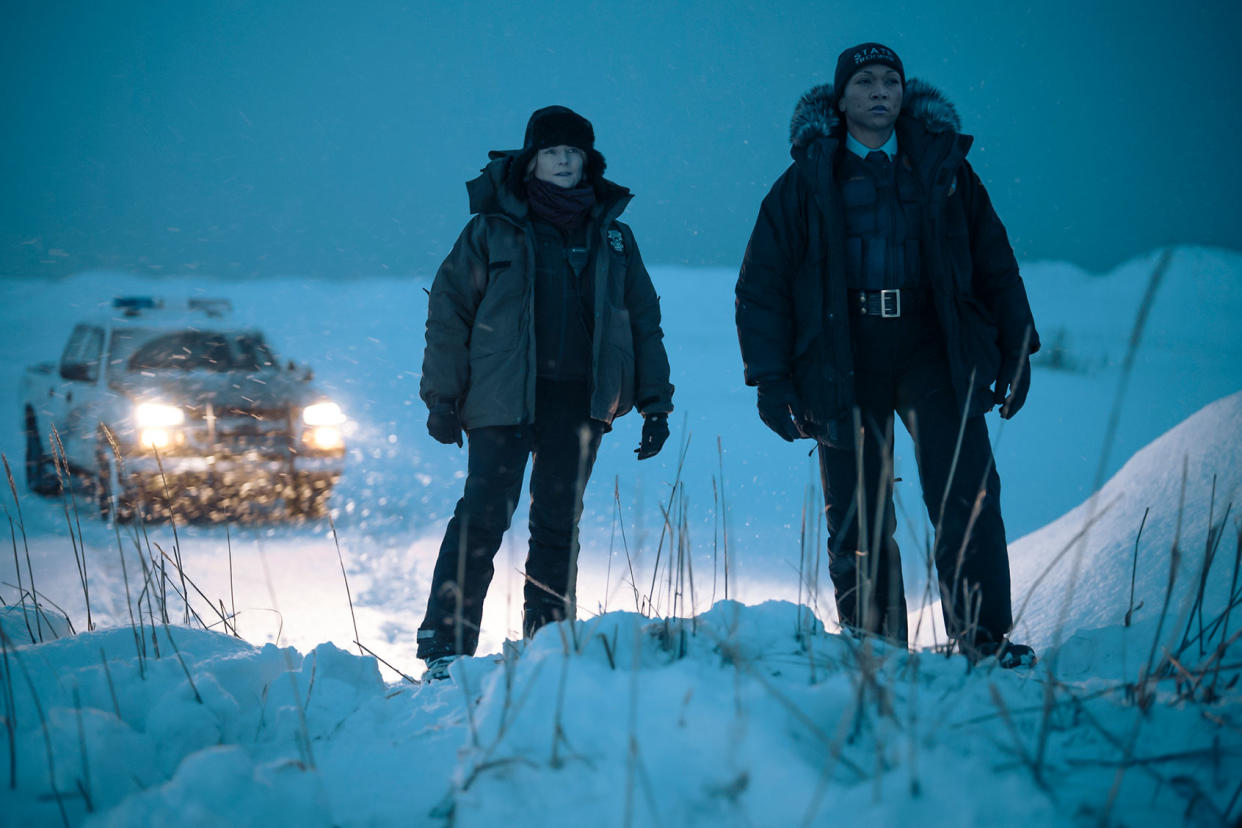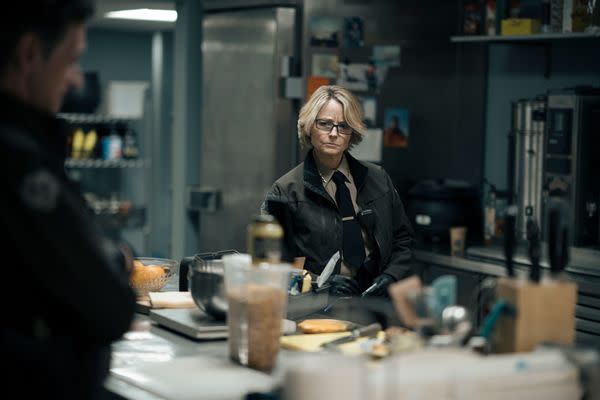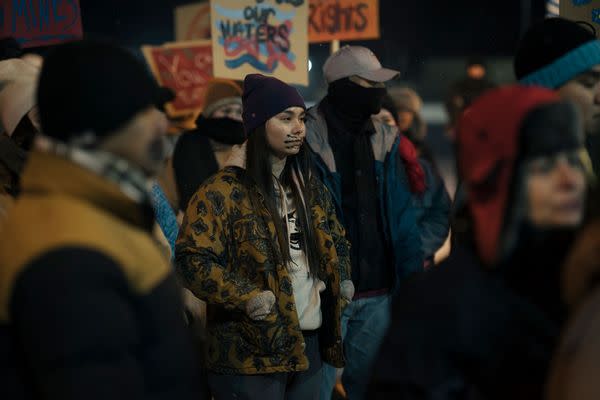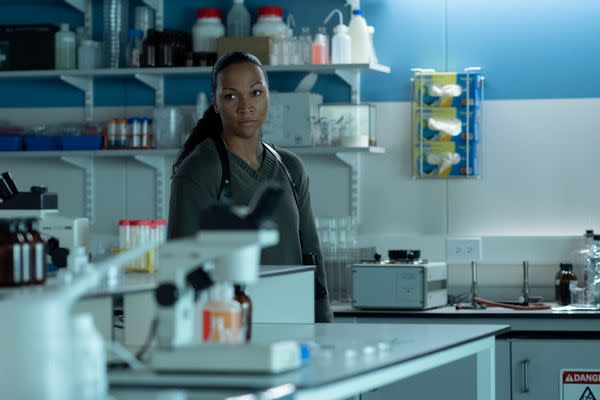Traveling into "Night Country" sparks an overdue reinvention for "True Detective"

In the 10 years since the first season of “True Detective” premiered, our definition of prestige television has warped, fractured and smoothed out again, many would say to the medium’s detriment. Some of that disappointment has to do with our own outsized expectation that everything must be on par with HBO’s standard setters — if only! Studios’ abandonment of originality in favor of familiar IP shoulders a lot of that blame, too.
We hooked into Nic Pizzolatto’s eerie, engrossing, seductive and terrifying beauty right when this fever was beginning to take hold. The poetic dialogue woven through each "True Detective" episode and the bayou haze cast a spell on the audience, all of which Matthew McConaughey took full advantage of in playing Rust Cohle, the philosopher detective driving Woody Harrelson’s cynical Marty Hart.
Their performances and director Cary Fukunaga’s mesmerizing imagery, as executed by cinematographer Adam Arkapaw, broke "True Detective" free from the crime genre’s pack . . . for a short time. Eight episodes, to be specific. Seasons 2 and 3 of “True Detective” failed to recreate the first’s winning formula, which, for all the goodwill it earned, plunked down an ending that didn't justify the misdirecting woo-woo differentiating the anthology series from other bloody meanderings.
Why go back five years after the last and least successful chapter of this show? For the same reasons every “True Detective” story reels us in despite the shortcomings of the previous: unfinished business, along with the unrelenting feeling that it is salvageable.
Enter Issa López, who successfully married horror and crime in her 2019 entry “Tigers Are Not Afraid.” López is credited for creating, writing and directing this latest edition, officially titled “True Detective: Night Country,” but in truth, the franchise was reshaped to fit a story she’d already created.
Ergo, do not mistake this effort to be a woman working in the shadow of the men who came before her. She’s the one who brought the dark, addictively reeling us into that inkiness.
Season 4 circles back to the first’s high notes, inverting nearly everything about it. López trades Southern humidity and slow-boiling tension for the harsh land situated 150 miles north of the Arctic Circle. Sprawling, sometimes too bright sunshine is swapped for weeks without natural light. Remember all the male angst and posturing that defined the title?
Now, at last, we follow a capable, damaged pair of women as they contend with a bizarre murder case that’s placed an entire community on high alert.
TV has no lack of compelling mysteries, not even ones set near the Earth’s poles. FX just concluded “A Murder at the End of the World,” which is also set in the Arctic – Iceland, instead of Ennis, Alaska (although “Night Country” was filmed in Iceland). That limited series joins the expanding whodunit crime trend, a softer counter to the rise of true crime rawness. Real cases are usually more unsettling than fiction, and there are a lot more to choose from.
What most lack is the sense of locale and surreal atmosphere that is this franchise’s specialty, which López both honors and makes her own.

Ennis is a frigid place where the local economy is supported by industry, mainly mining, which has divided the locals. Employment at the mine sustains the local and mainly Indigenous community while fouling their water, contributing to a growing unrest. Between this and the usual local squabbles police chief Liz Danvers (Jodie Foster) and her tiny department are already spread thin.
Nevertheless, when an international team of scientists working at a nearby research station suddenly goes missing, leaving no clues except for a severed tongue, Danvers refuses to pass the case off to Anchorage.
State trooper Evangeline Navarro (Kali Reis, star of "Catch the Fair One") won’t let it go either. She and Danvers have a history that diverged with the unsolved murder of an I?upiaq woman. Navarro believes Danvers has turned her back on the case, which has haunted her for six years. Perhaps Danvers has. But when the scientists’ bodies are discovered in a scene reminiscent of a nightmarishly grotesque sculpture, a detail links the two and soon the women are in each other’s orbit again.
In a nod to the original “True Detective,” “Night Country” López teases the audience with hints that supernatural forces are at work, heightened by the timing of these mysterious murders. Not only do the scientists disappear on Dec. 17 – a week before Christmas, the day of the last sunset – they turn up dead at a time when the veil between the living and the dead is understood by the locals to be especially thin.
Juxtaposing the cheeriness of Beach Boys and Beatles anthems along with upbeat pop tunes with sightings that blur the line between imagination and truth only adds to the slightly off-balance nature of the story. Already the setting has us constantly reminding ourselves that the sky is always dark, throwing off our sense of time along with theirs. Joining this is the touch of local lore that Ennis is a place where the land speaks and renders its own justice.
People see the impossible. To one transplant, Fiona Shaw’s Rose Aguineau, conversing with the dead is normal. Navarro has other reasons to worry about strange visions, which might be spiritual or related to a darker fate lurking in her lineage.
Danvers’ world is spinning out, too. Her law enforcement job alienates her from her teenage stepdaughter Leah (Isabella Star LaBlanc), who burns to connect with her cultural identity, including protesting against the mining company.

Danvers’ workaholism is also drowning her young subordinate Pete (Finn Bennett), a greenhorn aspiring detective torn between a family that needs him and his desire to appease both. Pete’s father Hank (John Hawkes) is the department’s senior officer bent on eroding Danvers’ authority. And she isn’t exactly well-loved around town, thanks to her predilection for sleeping with other women’s husbands and partners.
If “Night Country” were little more than a reactionary gender inversion it wouldn’t sustain itself as well as it does for six episodes. But it is a response to the franchise’s historically disappointing treatment of its female characters. Previous seasons categorized their women as nags, whores, pawns or victims, used as accessories to the male lead’s ego or to reveal some flaw or quality in him. López purposefully provides her lead detectives with an array of psychological facets and shading, and ties the locals’ demeanor to the unforgiving nature of their environment.
The Arctic darkness doesn’t make life any easier for women than elsewhere, but it hides many secrets, and the people of Ennis follow that lead. It’s not quite a metaphor for either Navarro or Danvers since neither meets the qualification of a “hard” woman. But each is thickly shielded, and the differentiating nuances with which Reis and Foster play to that notion make them extraordinary to watch.
Foster’s performance is all cracked leather and matriarchal bittersweetness, pushing Danvers’ sadness to a place just beneath her impatient, determined surface. With Bennett’s wide-eyed Pete, she’s both a stern mother and mentor, pressing him to “ask the questions” – her motto for crime-solving that she never turns on herself.
With Navarro, Foster transforms Danvers into someone more brittle but not lacking in heart, a cornered creature vacillating between allying herself with what’s facing her or turning on it. Reis meets Foster’s dynamism at every turn, but with an even stoicism camouflaging a boiling stew of fears and resentments Navarro only reveals to the right people, unless they break through during the wrong time.
In more intimate scenes the actor plays off a tonal palette that demands us to read the corners of her expressiveness, which might lead viewers accustomed to the explosiveness of Harrelson, Colin Farrell or Vince Vaughn to question the effort behind her performance’s naturalism. But as the danger thickens Reis easily matches Foster’s nerviness.

There’s always a question with “True Detective” of whether the magical elements whirling about overcomplicate the mystery – or mysteries, plural. Visual cues to past seasons pop up early and often, and they might mean nothing at all or be the key to solving everything. That’s no different from the way the first season tricked us into obsessing over those mud and hair totems and whisperings about the Yellow King for nothing.
Want a daily wrap-up of all the news and commentary Salon has to offer? Subscribe to our morning newsletter, Crash Course.
At least this shard of Iceland-as-Alaska works with its intrinsic enchantment to encourage our sense of belief more than denial. “Night Country” cinematographer Florian Hoffmeister, whose vision captured the clouded morality at work in “Tár” and the unfeeling monstrosity behind “The Terror,” finds a glow in Ennis' wide, spare landscapes and plays up the warmth and chill of artificial light to meet the mood.
I appreciated his work more on a second viewing of each episode and how they matched each scene’s emotional tenor. If we’re persuaded this place has a sorcery about it, the photography and López's surefooted direction are why.
As for the mystery, in the way of previous cases this one is explainable. And that reveal will surely divide the audience. I found it to be deeply satisfying for the same reasons staunch defenders of past seasons may be left wanting. López and her co-writers also leave a few strings dangling which, again, is part of the deal with this title.
Some viewers may be less forgiving of the relative flatness of the male characters’ development although it is plain that some of that may be attributed to the general sense among the community’s women that men are, in many cases, obstacles around which they must navigate. Yeah, sure, of course – not all men. Pete’s goodness and his struggle to maintain it is a B-story worth investing in, along with local bar owner and bootlegger Eddie Qavvik (Joel D. Montgrand), who wants more from Navarro than she’s prepared to give.
In the main, the braiding of personal, communal, environmental and political subplots is presented and resolves cleanly. López weaves cultural details throughout the story without stepping outside the momentum to manufacture a sense of place and “otherness.” We spend enough time with some Inupiaq ceremonies and practices to get a sense of how this Indigenous population persists, and to understand what it means for Navarro, whose mother came from Ennis, and is both an insider and an outsider.
My main quibble is that HBO should have given López two more hours to arrive at its conclusion – the same number of episodes as past seasons inside of an economic six, which spurred the season’s second half into a sprint in some places. Wondering why “Night Country” didn’t receive eight hours may be asking the wrong question, to paraphrase Danvers. A better query may be to request whether and when we’ll get more seasons of this caliber.
"True Detective: Night Country" premieres at 9 p.m. Sunday, Jan. 14 on HBO and streams on Max.
